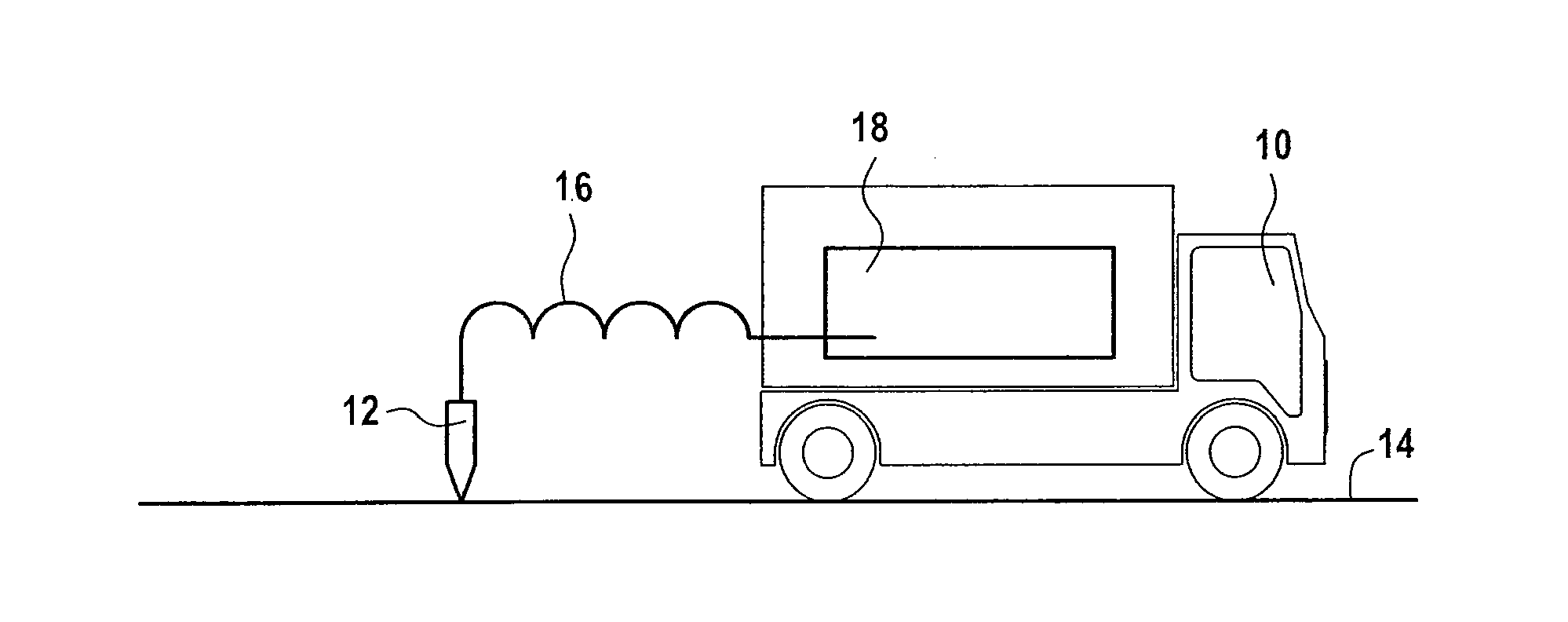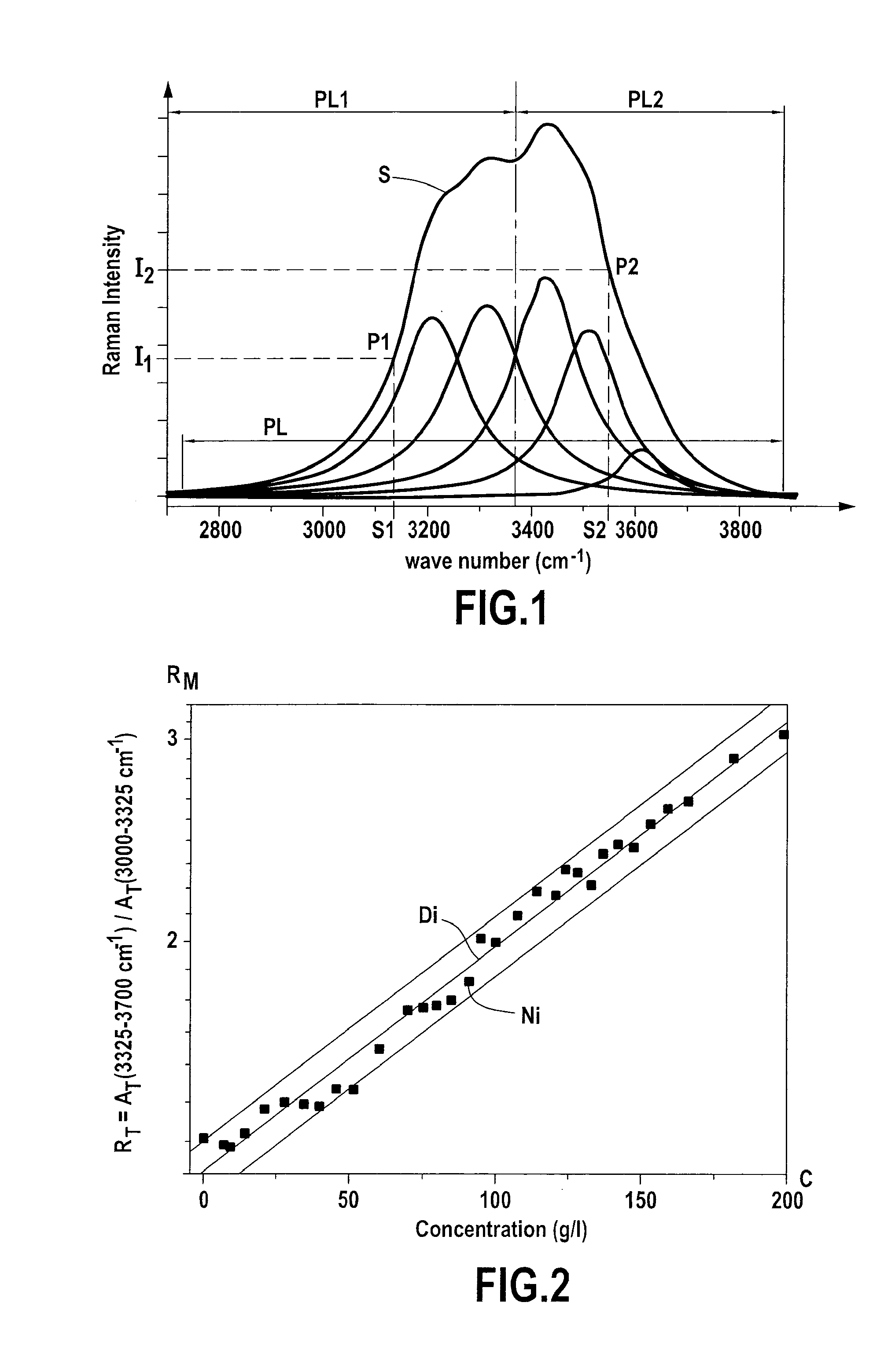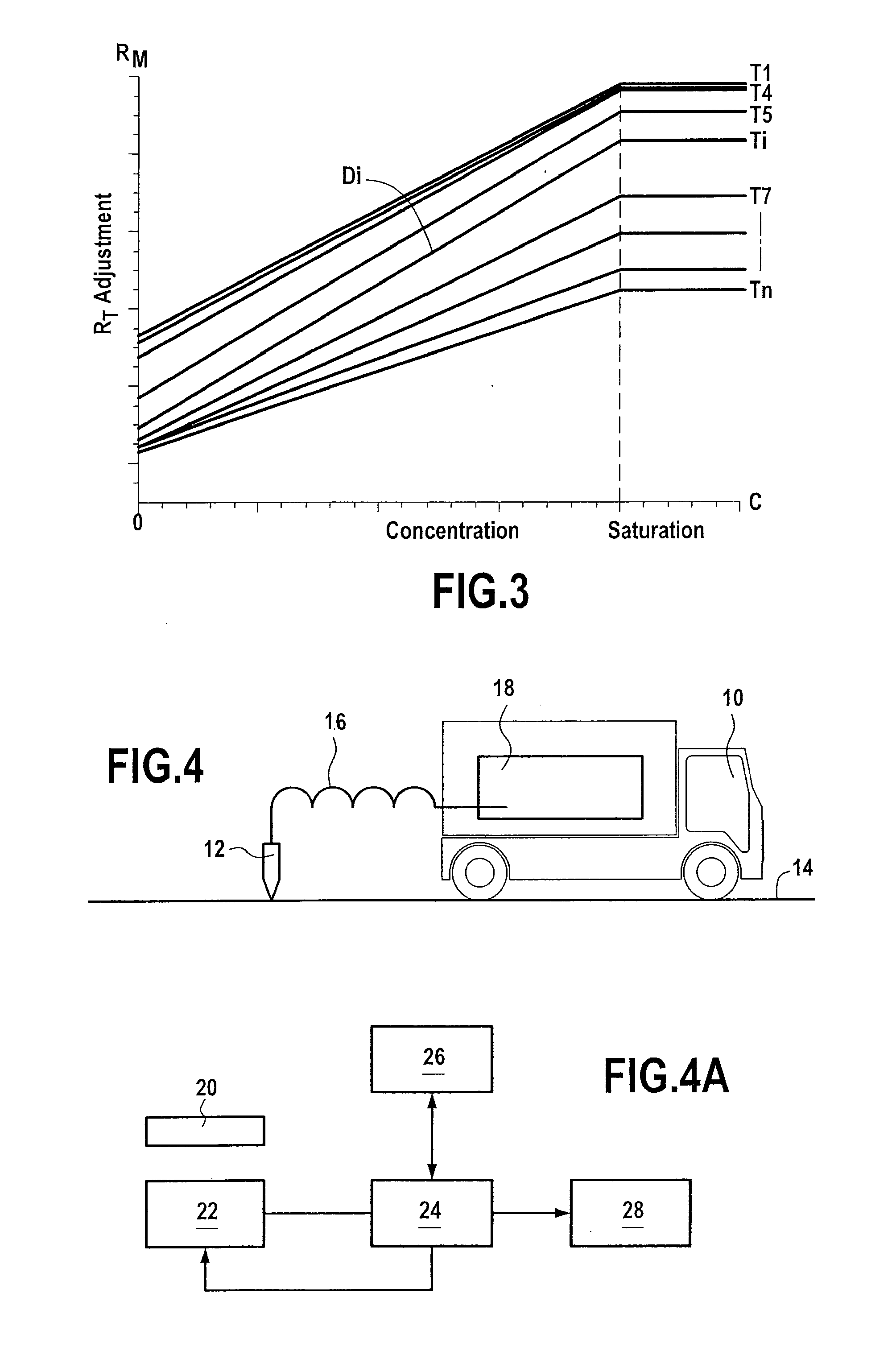Determination of the salt concentration of an aqueous solution
a technology of salt concentration and aqueous solution, which is applied in the direction of material testing goods, testing food, instruments, etc., can solve the problems of agri-foodstuffs industry, inability or economic inacceptability to take samples,
- Summary
- Abstract
- Description
- Claims
- Application Information
AI Technical Summary
Benefits of technology
Problems solved by technology
Method used
Image
Examples
Embodiment Construction
As explained above, the method of the invention uses Raman spectrometry.
This technique is well known in itself and thus has no need to be described in detail.
It suffices to outline its general principle.
When a transparent sample is subjected to a monochromatic electromagnetic wave, a small fraction of the light is scattered.
Frequency analysis of the scattered light shows up a component of the same wavelength as the incident light (elastic scattering) and a component comprising wavelengths different from the incident beam (inelastic scattering).
It is this second component that is used in Raman spectroscopy. The Raman spectrum of the scattered beam is characteristic of the material to which the electromagnetic beam was applied.
The method of determining the salt concentration of an identified aqueous solution is described below.
The method of the invention includes a preliminary step of constructing a reference curve chart followed by a step of determining the real salt concentration of...
PUM
 Login to View More
Login to View More Abstract
Description
Claims
Application Information
 Login to View More
Login to View More - R&D
- Intellectual Property
- Life Sciences
- Materials
- Tech Scout
- Unparalleled Data Quality
- Higher Quality Content
- 60% Fewer Hallucinations
Browse by: Latest US Patents, China's latest patents, Technical Efficacy Thesaurus, Application Domain, Technology Topic, Popular Technical Reports.
© 2025 PatSnap. All rights reserved.Legal|Privacy policy|Modern Slavery Act Transparency Statement|Sitemap|About US| Contact US: help@patsnap.com



